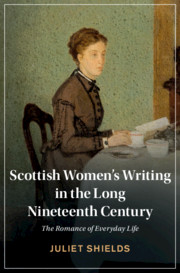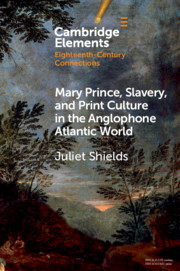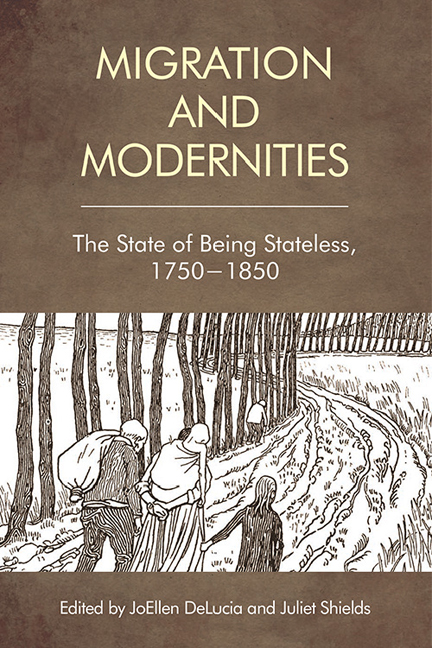38 results
Chapter 22 - The Act of Union
- from Part IV - The Monarchy and Parliament
-
-
- Book:
- Daniel Defoe in Context
- Published online:
- 27 April 2023
- Print publication:
- 11 May 2023, pp 179-186
-
- Chapter
- Export citation
Copyright page
-
- Book:
- Scottish Women's Writing in the Long Nineteenth Century
- Published online:
- 27 July 2021
- Print publication:
- 29 July 2021, pp iv-iv
-
- Chapter
- Export citation
Acknowledgments
-
- Book:
- Scottish Women's Writing in the Long Nineteenth Century
- Published online:
- 27 July 2021
- Print publication:
- 29 July 2021, pp vi-viii
-
- Chapter
- Export citation
Chapter 4 - The Colonial Adventure Story and the Return of Romance
-
- Book:
- Scottish Women's Writing in the Long Nineteenth Century
- Published online:
- 27 July 2021
- Print publication:
- 29 July 2021, pp 120-149
-
- Chapter
- Export citation
Chapter 2 - Annie S. Swan’s Friendly Fiction
-
- Book:
- Scottish Women's Writing in the Long Nineteenth Century
- Published online:
- 27 July 2021
- Print publication:
- 29 July 2021, pp 67-92
-
- Chapter
- Export citation
Bibliography
-
- Book:
- Scottish Women's Writing in the Long Nineteenth Century
- Published online:
- 27 July 2021
- Print publication:
- 29 July 2021, pp 187-198
-
- Chapter
- Export citation
Conclusion
-
- Book:
- Scottish Women's Writing in the Long Nineteenth Century
- Published online:
- 27 July 2021
- Print publication:
- 29 July 2021, pp 180-186
-
- Chapter
- Export citation
Introduction
-
- Book:
- Scottish Women's Writing in the Long Nineteenth Century
- Published online:
- 27 July 2021
- Print publication:
- 29 July 2021, pp 1-32
-
- Chapter
- Export citation
Chapter 3 - The Scottish New Woman and the Art of Self-Sacrifice
-
- Book:
- Scottish Women's Writing in the Long Nineteenth Century
- Published online:
- 27 July 2021
- Print publication:
- 29 July 2021, pp 93-119
-
- Chapter
- Export citation
Contents
-
- Book:
- Scottish Women's Writing in the Long Nineteenth Century
- Published online:
- 27 July 2021
- Print publication:
- 29 July 2021, pp v-v
-
- Chapter
- Export citation
Index
-
- Book:
- Scottish Women's Writing in the Long Nineteenth Century
- Published online:
- 27 July 2021
- Print publication:
- 29 July 2021, pp 199-204
-
- Chapter
- Export citation
Chapter 5 - Scottish Modernism and Middlebrow Aesthetics
-
- Book:
- Scottish Women's Writing in the Long Nineteenth Century
- Published online:
- 27 July 2021
- Print publication:
- 29 July 2021, pp 150-179
-
- Chapter
- Export citation
Chapter 1 - Oliphant, Scott, and the Novelist’s Trade
-
- Book:
- Scottish Women's Writing in the Long Nineteenth Century
- Published online:
- 27 July 2021
- Print publication:
- 29 July 2021, pp 33-66
-
- Chapter
- Export citation

Scottish Women's Writing in the Long Nineteenth Century
- The Romance of Everyday Life
-
- Published online:
- 27 July 2021
- Print publication:
- 29 July 2021

Mary Prince, Slavery, and Print Culture in the Anglophone Atlantic World
-
- Published online:
- 12 April 2021
- Print publication:
- 06 May 2021
-
- Element
- Export citation

Migration and Modernities
- The State of Being Stateless, 1750–1850
-
- Published by:
- Edinburgh University Press
- Published online:
- 05 May 2021
- Print publication:
- 27 November 2018
Contributor Biographies
-
- Book:
- Migration and Modernities
- Published by:
- Edinburgh University Press
- Published online:
- 05 May 2021
- Print publication:
- 27 November 2018, pp vi-viii
-
- Chapter
- Export citation
Contents
-
- Book:
- Migration and Modernities
- Published by:
- Edinburgh University Press
- Published online:
- 05 May 2021
- Print publication:
- 27 November 2018, pp iii-iv
-
- Chapter
- Export citation
Introduction: A Literary History of Migration, 1750–1850
-
-
- Book:
- Migration and Modernities
- Published by:
- Edinburgh University Press
- Published online:
- 05 May 2021
- Print publication:
- 27 November 2018, pp 1-14
-
- Chapter
- Export citation
I - Moving Voices: Competing Perspectives on Migration
-
- Book:
- Migration and Modernities
- Published by:
- Edinburgh University Press
- Published online:
- 05 May 2021
- Print publication:
- 27 November 2018, pp 15-16
-
- Chapter
- Export citation



